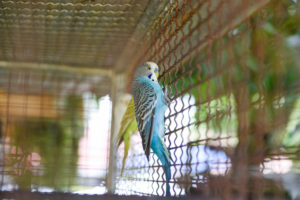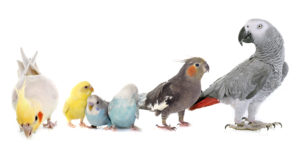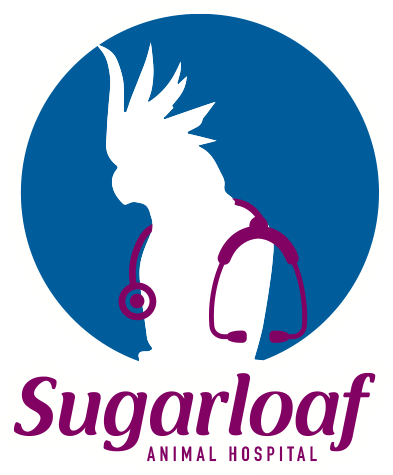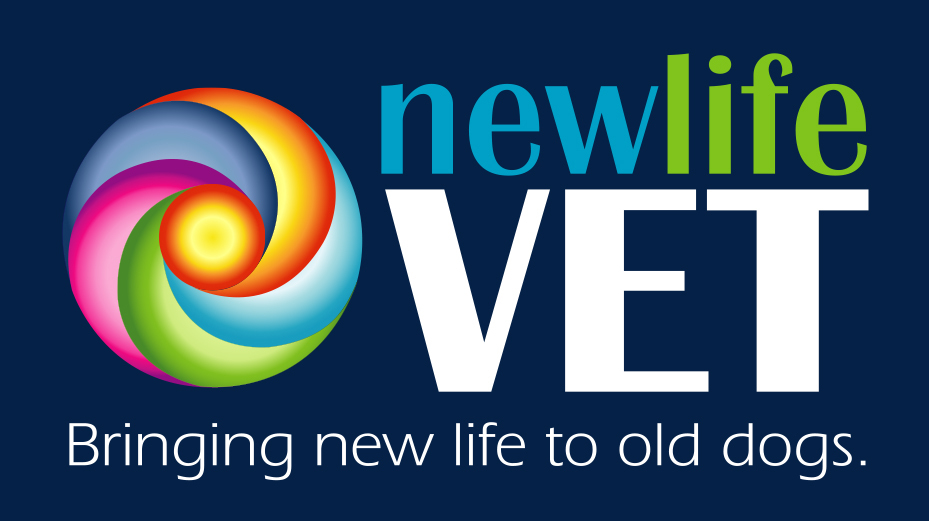As responsible pet owners, the first thing that we all want to do is to provide our exotic birds with a safe living environment in a cage, or even better, an aviary. So it’s somewhat ironic that this place of protection is also the source of one of the greatest dangers – Heavy Metal Intoxication (HMI.)
HMI is a major, and common, problem affecting both wild and captive bird populations. Historically, toxicities involving lead, zinc, iron, or copper appear to have the greatest clinical impact on birds. For example, lead and zinc toxicities are commonly recognized causes of illness in pet psittacine birds (parrots), birds in zoological collections, and waterfowl.

Zinc is used on many cages to prevent rusting and when new (before it has oxidised) it is toxic to birds when ingested. We see this often in birds placed into a new aviary or cage and it is called “New Wire Disease” for this reason. Lead poisoning usually occurs in older environments, when birds chew on the solder used to join the wire together. Lead toxicosis due to ingestion of gunshot is claimed to be the cause of death of between 1.6—2.4 million ducks annually!
Parrots are known to be very curious and active creatures who like to chew anything in sight. Since there are many objects in their immediate vicinity that contain zinc and almost as many that contain lead, they are the most prone to HMI. A proper, nutritional diet with sufficient mineral content will help alleviate excessive chewing. Inquisitive, depressed, or attention-seeking pet birds are more likely to chew wire and so may ingest the zinc coating or solder “slag.”
Sources of heavy metal in a bird’s environment may be obvious in galvanized cages (containing zinc oxide), or wire ties in plastic cages. In ceramic-powder coated cages, watch for constant abrasion by a parrot’s beak and claws that exposes the underlying metal and increases the risk of contamination. Low-grade exposure, particularly of lead (plumbism), over time may cause mild illness with some gastrointestinal signs. More severe cases show neurological signs and acute poisoning can cause death within a few hours.
The common signs of HMI are increased thirst, sudden depression, not eating and a dark green diarrhoea, plus vomiting in larger birds. Final diagnosis may be made by measuring the levels of metals in the blood or tissues. Radiography is useful for imaging metallic objects in the gastrointestinal tract. Endoscopy can be helpful to find objects in the ventriculus as well as to extract them. A complete blood count (CBC) may show heterocytosis and anemia. Blood chemistry can show dehydration and elevated uric acid levels.
“Upon diagnosis, we start a treatment of twice-daily injections that involve a three- to five-day stay in hospital,” said Dr. Mark Simpson, an avian specialist and managing partner for more than 20 years at Sugarloaf Animal Hospital in West Wallsend, which is renowned for its treatment and care of exotic animals. “Once stabilised, we may be able to send your bird home with injections twice weekly for 6-12 weeks. Most birds make a complete recovery, but subsequent efforts must be made to identify and remove any possible sources of heavy metal from your bird’s environment.”
SAH recommends the preventative measure of covering all metal surfaces with a “safe” paint such as Tremco Metal Armour Gal Primer, followed by Tremco Metal Armour enamel. Most spray-on acrylic paints should also be fine, and there is one big cage manufacturer in the U.S. that uses this precise system for treating their cages. Even though extensive research by Dr. Ross Perry suggests the Tremco paint combination to be the safest, eventually through wear and tear, the metal will be exposed again.

When building a new aviary, we advise owners to get a wire brush attachment for their electric drill and thoroughly scrub the wire with a dilute acid (vinegar works well) and remove as much gal as practical before painting. Since birds will still chew off paint, we advise a longer, larger cage with more internal natural features to act as a distraction. These may include branches, greens, logs, borer grubs as in black wattle, soft timber, seed heads, fruits of native proteaceous plants such as banksias, hakea, and other “nuts” like callistemon and melaleuca, as well as other forms of behavioural enrichment.
There are several commercially available PVC-coated wire meshes that should be safe for birds and may something to consider in any new aviaries. There are even some forms of stainless steel wire netting now available and while they are very, very expensive, so are many of our exotic birds!
There are also many household sources of heavy metals of which you should be aware that include, but are not limited to:
- Lead-based paint and marine paint, which still contains lead.This can be ingested by birds chewing on windowsills, doors etc, or when houses are being renovated.
- Lead foil from seals of wine of champagne bottles; foil capping on wine bottles
- Some bird toys – remove if corroded/rusted
- Galvanised cage wire or water/food dishes (white rust on poor quality wire may contain 4% lead)
- Soil contamination
- Curtain weights
- Roof nails
- Linoleum
- Batteries
- PVC
- Costume jewellery
- Golf balls
- Fishing sinkers
- Ammunition





